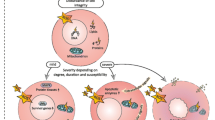Abstract
Increasing use of oxygen in clinical practice has provided new impetus for determining mechanisms of acute pulmonary oxygen toxicity. The pathophysiology of lungs exposed to oxygen in vivo and in vitro suggests a direct toxic effect of hyperoxia upon lung cells, with variation in sensitivity to injury among cell types. The currently accepted primary mechanism for oxygen-induced cellular injury is enhanced oxygen-derived free radical generation with subsequent oxidative attack upon basic cell constituents. The major intracellular sources of increased free radicals are undetermined, but there is sufficient evidence that the extracellular contribution, specifically from PMN leukocyte influx into lungs is not critical to lethal pulmonary oxygen toxicity. Cellular protection is provided by intracellular enzymatic and nonenzymatic anti-oxidant defenses, which can be manipulated by experimental treatments to alter survival in O2. Our increasing knowledge of the mechanisms of oxidant toxicity may lead to improved strategies for early detection of lung damage and for the prevention or treatment of injury.
Similar content being viewed by others
References
Bean JW (1945) Effects of oxygen at increased pressure. Physiol Rev 25:1–147
Berg JT, Smith RM (1984) Endotoxin protection of rats from O2 toxicity: chemiluminescence of lung neutrophils. Res Commun Chem Pathol Pharmacol 44:461–476
Chance B, Sies H, Boveris A (1979) Hydroperoxide metabolism in mammalian organs. Physiol Rev 59:527–605
Crapo JD, Barry BE, Foscue HA, Shelburne J (1980) Structural and biochemical changes in rat lungs occurring during exposures to lethal and adaptive doses of oxygen. Am Rev Respir Dis 122:123–143
Fisher AB (1980) Oxygen therapy. Am Rev Respir Dis 122:61–69
Fisher AB, Bassett DJP, Forman HJ (1979) Oxygen toxicity of the lung: biochemical aspects. In: Fishman A, Renkin E (eds) Pulmonary edema. American Physiological Society, Bestheda, Md, 1979, pp 207–216
Fisher AB, Diamond S, Mellen S (1974) Effect of O2 exposure on metabolism of the rabbit alveolar macrophage. J Appl Physiol 37:341–345
Forman HJ, Fisher AB (1981) Antioxidant defenses. In: Gilbert DL (ed) Oxygen and living processes. Springer, New York Heidelberg Berlin, pp 235–249
Forman HJ, Williams JJ, Nelson J, Daniele RP, Fisher AB (1982) Hyperoxia inhibits stimulated superoxide release by rat alveolar macrophages. J Appl Physiol 53:685–689
Fox RB, Hoidal JR, Brown DM, Repine JE (1981) Pulmonary inflammation due to oxygen toxicity: involvement of chemotactic factors and polymorphonuclear leukocytes. Am Rev Respir Dis 123:521–523
Frank L, Summerville J, Massaro D (1980) Protection from oxygen toxicity with endotoxin. J Clin Invest 65:1104–1110
Freeman BA, Crapo JD (1981) Hyperoxia increases oxygen radical production in rat lungs and lung mitochondria. J Biol Chem 256:10986–10992
Freeman A, Crapo JD (1982) Free radicals and tissue injury. Lab Invest 47:412–426
Fridovich I (1981) Superoxide radical and superoxide dismutase. In: Gilbert DL (ed) Oxygen and living processes. Springer, New York Heidelberg Berlin, pp 250–272
Gerschman R (1964) Biological effects of oxygen. In: Dickens EF, Neil E (eds) Oxygen in the animal organism. Macmillan, New York, pp 475–494
Glass M, Forman HJ, Rotman EI, Clark JM, Pietra GG, Fisher AB (1985) Cellular composition of lung lavage in oxygen toxicity. Fed Proc (abstr) (in press)
Huber GL, Drath DB (1981) Pulmonary oxygen toxicity. In: Gilbert DL (ed) Oxygen and living processes. Springer, New York, pp 273–342
Johnson KJ, Fantone JC, Kaplan J, Ward PA (1981) In vivo damage of rat lungs by oxygen metabolites. J Clin Invest 67:983–993
Kapanci Y, Weibel ER, Kaplan HP, Robinson FR (1969) Pathogenesis and reversibility of the pulmonary lesions of oxygen toxicity in monkeys. II. Ultrastructural and morphometric studies. Lab Invest 20:101–118
Lorrain-Smith J (1899) The pathological effects due to increase of oxygen tension in the air breathed. J Physiol 24:19–25
Martin WJ, Gadek JE, Hunninghake GW, Crystal RG (1981) Oxidant injury of lung parenchymal cells. J Clin Invest 68:1277–1288
Ohlsson WTI (1947) A study on oxygen at atmospheric pressure. Acta Med Scand [Suppl] 190:1–93
Raj JU, Bland RD (1983) Neutrophil depletion does not prevent oxygen-induced lung injury in rabbits. Chest 83:20s-21s
Rister M, Baehner RL (1977) Effect of hyperoxia on superoxide anion and hydrogen peroxide production of polymorphonuclear leucocytes and alveolar macrophages. Br J Haematol 36:241–248
Shasby DM, Fox RB, Harada RN, Repine JE (1982) Reduction of the edema of acute hyperoxic lung injury by granulocyte depletion. J Appl Physiol 52:1237–1244
Smith B, Winter PM, Wheelis RF (1973) Increased normobaric oxygen tolerance of rabbits following oleic acid-induced lung damage. J Appl Physiol 35:395–400
Steinberg H, Greenwald RA, Sciubba J, Das DK (1982) The effect of oxygen-derived free radicals on pulmonary endothelial cell function in the isolated perfused rat lung. Exp Lung Res 3:163–173
Suttorp N, Simon LM (1982) Lung cell oxidant injury. Enhancement of polymorphonuclear leukocyte-mediated cytotoxicity in lung cells exposed to sustained in vitro hyperoxia. J Clin Invest 70:342–350
Thet LA, Wrobel DJ, Crapo JD, Shelburne JD (1983) Morphologic aspects of the protection by endotoxin against acute and chronic oxygen-induced lung injury in adult rats. Lab Invest 48:448–457
Tierney DF, Ayers L, Lasuyama RS (1977) Altered sensitivity to oxygen toxicity. Am Rev Respir Dis 115:59–65
Turrens JF, Freeman BA, Crapo JD (1982) Hyperoxia increases H2O2 release by lung mitochondria and microsomes. Arch Biochem Biophys 217:411–421
Yusa T, Crapo JD, Freeman BA (1984) Hyperoxia enhances lung and liver nuclear superoxide generation. Biochim Biophys Acta 798:167–174
Author information
Authors and Affiliations
Rights and permissions
About this article
Cite this article
Fisher, A.B., Forman, H.J. & Glass, M. Mechanisms of pulmonary oxygen toxicity. Lung 162, 255–259 (1984). https://doi.org/10.1007/BF02715655
Accepted:
Issue Date:
DOI: https://doi.org/10.1007/BF02715655




